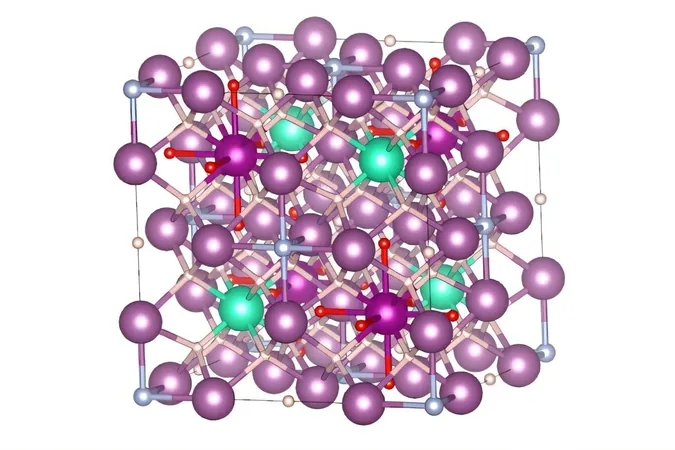
Unlocking the Secrets of Tardigrades: Could Their Radiation Resilience Save Humanity?
2024-10-29
Author: Mei
Introduction
In a groundbreaking discovery, scientists have identified key mechanisms behind the extraordinary resilience of tardigrades, also known as "water bears," to ionizing radiation. This research could pave the way for innovative treatments that either shield humans from radiation or enhance recovery after exposure— a notion that once seemed confined to the realms of science fiction.
The Extraordinary Resilience of Tardigrades
Tardigrades are remarkable microscopic organisms capable of surviving extreme conditions, including doses of radiation nearly 1,000 times higher than those lethal to humans. Their survival strategy remains largely enigmatic, prompting researchers to delve deeper into the genetic makeup of a newly identified species called *Hypsibius henanensis*.
Genomic Discoveries and Key Genes
The research team from China has sequenced the genome of this tardigrade and discovered that exposure to radiation triggered the activation of 2,801 genes connected to crucial processes like DNA repair, immune responses, and cell division regulation. Among these, a pivotal gene identified as DODA1 stands out. This gene appears to have originated from bacteria via horizontal gene transfer—a method similar to how bacteria acquire antibiotic resistance. DODA1 only activates when the tardigrade encounters radiation and facilitates the production of pigment compounds called betalains, which are usually found in various organisms ranging from bacteria to plants.
The Role of Betalains
Betalains have a fascinating ability to absorb radiation, allowing the tardigrade to accumulate radioactive particles with efficiency. Additionally, the research highlighted the production of a unique protein named TRID1, which accelerates the repair of double-strand DNA breaks caused by radiation exposure by employing a mechanism known as phase separation.
Energy Synthesis and Repair Mechanisms
Furthermore, two additional proteins generated in response to radiation were found to expedite the synthesis of adenosine triphosphate (ATP) and NAD+, essential components of cellular energy and metabolism. Both molecules play critical roles in repairing DNA, further emphasizing their significance in the tardigrade's survival strategy.
Potential Human Health Applications
This research holds potential implications for human health. Notably, human cells exposed to tardigrade-derived betalains exhibited increased viability under radiation, suggesting a possible avenue for therapeutic application. The specifics of whether such a treatment could serve as preventative therapy or post-exposure support remain to be detailed.
Implications for Space Exploration
In addition to improving human resilience to radiation, this research could also have intriguing applications for space exploration. As astronauts face heightened radiation risks, the insights gleaned from tardigrades might guide the development of protective strategies against cosmic rays.
Conclusion
Courtney Clark-Hachtel, a biology assistant professor at UNC Asheville, emphasized the significance of these findings, stating, “Understanding how tardigrades respond to radiation could lead to new protective measures for not only humans but also other living organisms and microorganisms vulnerable to radiation exposure.” As researchers continue to probe the genetic secrets of tardigrades, the potential to enhance human health and safety in a world where radiation exposure is a growing concern could soon become a reality. Stay tuned for developments—this is just the beginning of what these resilient creatures might teach us!



 Brasil (PT)
Brasil (PT)
 Canada (EN)
Canada (EN)
 Chile (ES)
Chile (ES)
 España (ES)
España (ES)
 France (FR)
France (FR)
 Hong Kong (EN)
Hong Kong (EN)
 Italia (IT)
Italia (IT)
 日本 (JA)
日本 (JA)
 Magyarország (HU)
Magyarország (HU)
 Norge (NO)
Norge (NO)
 Polska (PL)
Polska (PL)
 Schweiz (DE)
Schweiz (DE)
 Singapore (EN)
Singapore (EN)
 Sverige (SV)
Sverige (SV)
 Suomi (FI)
Suomi (FI)
 Türkiye (TR)
Türkiye (TR)